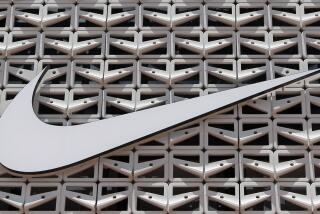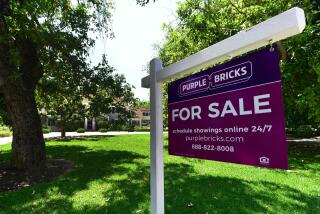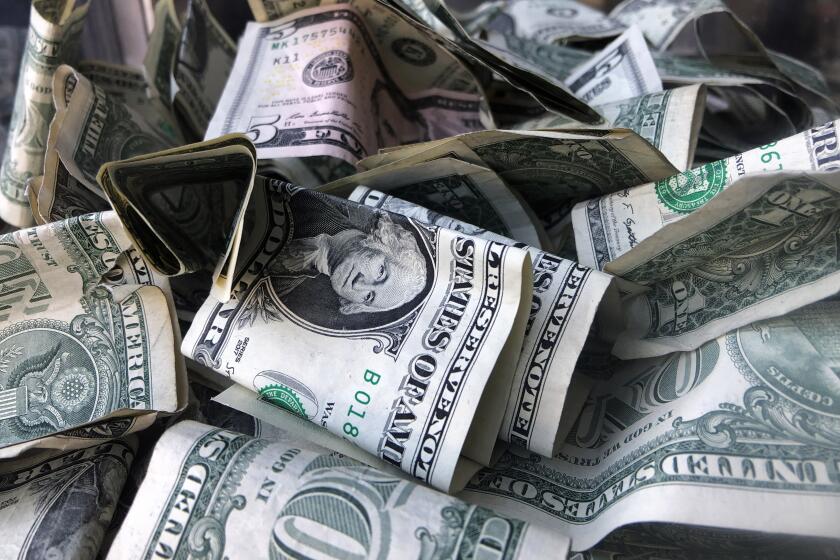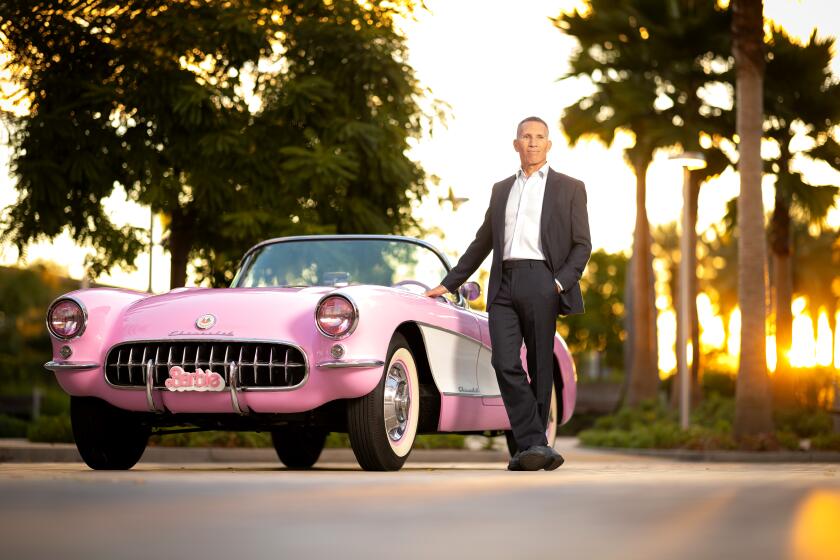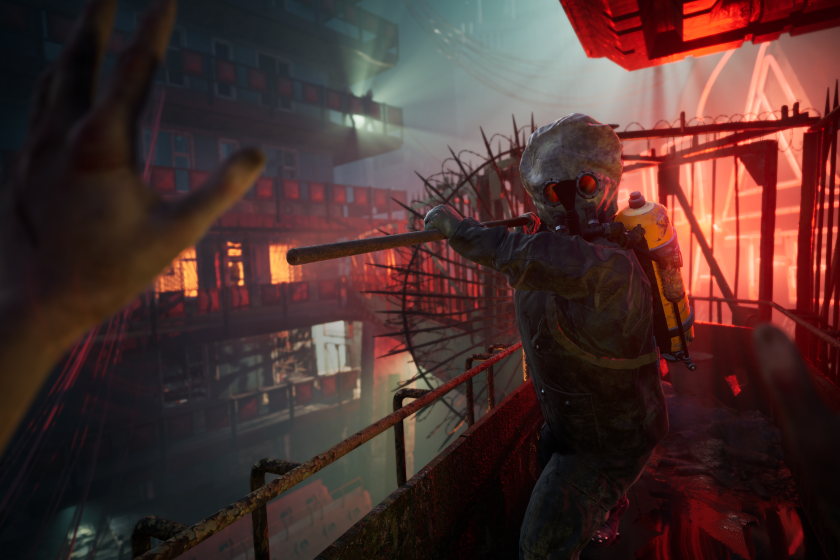An Empire Fades Away, but Its Legacy Lingers On : <i> Final Chapter Is Being Written for What Once Was West’s Greatest Industrial Power </i>
In the San Francisco office of Touche Ross, accountants are working on calculations that they hope will lead to the perfect zero. When they succeed--and they must no later than Nov. 30--they will have written the final balance on what once was the greatest industrial empire in the western United States.
It has been nearly five years since the task of parceling out Kaiser Industries’ remaining $20 million of assets was assigned to the accounting firm. Every six months since then it has sent out checks to former Kaiser Industries shareholders. The last checks go out this fall.
And that will be that. For many of the former Kaiser shareholders, it is anticlimactic; the checks might pay their utility bills for a month, maybe two. More than 90% of the company’s assets were distributed between 1977, when Kaiser Industries voluntarily began its breakup, and 1980, when the liquidating trustees handed the leftovers to Touche Ross.
But to others--among them the heirs and former associates of Henry J. Kaiser--the final check will be the bittersweet reminder of what was, or what could have been.
“The main thing that was lost is the sense of being part of something greater than yourself. No question, there was excitement at being part of the Kaiser name and heritage,” Henry Mead Kaiser, grandson of Henry J. Kaiser, said in an interview. “In its heyday, it was very exciting. . . . It was such a dynamic and powerful base from which to build, I just hate to see it not continue.”
By itself, Kaiser Industries wasn’t much. It was, rather, more of a device, formed in 1956, to bind together the diverse pieces of Kaiser’s unraveling empire--an empire that once crisscrossed the globe on sturdy legs of steel, cement and aluminum.
Its companies built ships, autos, dishwashers and even kitchen sinks. They engineered or constructed steel plants, bridges, roads and dams. They mined and refined coal, iron ore, magnesium and half a dozen other minerals. They had tens of thousands of employees in dozens of states and foreign countries. They built houses that sheltered as many others and they provided health care for hundreds of thousands more.
And, historians believe, the creation of Henry J. Kaiser’s empire was the pivotal event in the industrialization of the West.
“More than any other individual person, industrialist Henry J. Kaiser was responsible for the wartime industrial boom in the West,” University of New Mexico history professor Gerald D. Nash wrote in his 1973 book, “The American West in the 20th Century.”
The recent malaise of smokestack industries in the United States has led historians and economists back to that wartime boom in search of ways to rekindle industrial growth. And, Nash said in a telephone interview, that search leads to Kaiser as a premiere example of “the transformation of an economy.”
Henry J. Kaiser’s accomplishments stretched the label “industrialist” to new dimensions. Many men built bigger single companies or made more money than Kaiser, but nobody ever created such a broad collection of companies. He was tireless, a man of vision and spirit; many times he ventured into fields in which he had no practical knowledge. His companies’ expansion often was underwritten by a federal government desperate for wartime goods, and executed by masses of unskilled and often minority workers.
Although the bulk of his companies was based on heavy industries--and since have been caught on the downward slide of those industries--he also began businesses in aerospace, electronics and broadcasting. Had he lived long enough, some say, he would have ventured into high technology and other growth industries.
But the empire’s momentum stalled when the second generation, a collection of bright, competent managers, took over the companies, Nash said. Under the leadership of Henry’s elder son, Edgar F. Kaiser Sr., many of the firms participated in worldwide industrial expansion, but seldom strayed from their main lines of business.
“What happened to the Kaiser companies is what happened to the American economy: too much concern with internal management and not enough with striking out in new directions,” Nash said. Whereas Henry Kaiser “was flexible, imaginative and daring,” too many corporations have been bogged down by short-term concerns and “managerial smugness.”
Bitter Office Politics
Others agree that Henry J. Kaiser was the spark and that the companies never again ran as smoothly after he semi-retired in the early 1950s and officially stepped down in 1959. In the ensuing years, insiders say, Kaiser Industries was caught up in bitter office politics, stodgy bureaucracy and an inability to cut its losses and move on.
Without the push into new fields, the need for the Kaiser Industries superstructure diminished. Public shareholders got fewer dividends from the whole than they would have from the parts, and tax laws no longer favored the relationship between Kaiser Industries, its affiliated companies and the Kaiser family’s charitable foundation that held significant blocks of shares in the companies. The end of the empire came less than a decade after Henry J. Kaiser’s death in 1967.
Since the liquidation, almost every remaining tie between the Kaiser family and the operating companies has been severed. The family foundation has sold off its interests in the companies. There are no Kaisers on the companies’ boards.
But family interest remains keen in the charitable foundation, and the Kaiser Permanente Medical Care Program, a nonprofit health maintenance organization that many now view as Henry J. Kaiser’s real legacy.
That much would have pleased him, believes Mark S. Foster, a professor of history at the University of Colorado who is working on a biography of Henry J. Kaiser. There is no doubt that he and his son Edgar both were committed to improving health-care delivery systems, Foster said.
Filling Greatest Need
“On his 85th birthday, several months before he died,” a history produced in 1968 by Kaiser Industries relates, “Henry J. Kaiser looked back on a career of achievement and told reporters, ‘Of all the things I’ve done, I expect only to be remembered for my hospitals. They’re the things that are filling the people’s greatest need--good health.’ ”
Grandson Henry Mead Kaiser, who is a director of the family foundation and the health plan, believes that prophesy has been fulfilled. Today, Kaiser Permanente is the largest health maintenance organization in the United States, with 4.8 million members and revenue of about $3.5 billion in 1984.
Henry Mead’s older brother, Edgar F. Kaiser Jr., is chairman of the Henry J. Kaiser Family Foundation, a tax-free charitable organization that each year donates as much as $10 million, mostly in support of health-care delivery systems. “It was the most important thing to my grandfather,” Edgar Jr. said in an interview.
The health-care plan “came underneath the foundation if you go back historically, and now it’s an institution--a big one.”
In a comparison Henry J. probably would have enjoyed, Edgar Jr. likened his grandfather to Henry Ford, J. P. Morgan or John D. Rockefeller, and their foundations to the Kaiser trust. “What you hope is in all those foundations you’ve provided the funding for and the environment for the creative spirit of those truly great men to continue. And that is less than perfect, but it’s the best you can do. . . . “
Considerable Ego
Despite his own disclaimer, however, it seems likely that Henry J. Kaiser expected to be remembered for more than the health-care program. He was a man of considerable girth, and--from most indications--of considerable ego as well.
By 1944, Kaiser was on Franklin D. Roosevelt’s list of possible replacements for Vice President Henry Wallace. Long after Harry S. Truman had been selected, Kaiser told some of his associates that he had been offered the job but had turned it down. Said historian Foster: “knowing what I know about Roosevelt, that never happened.”
Kaiser’s energy and determination drove men half his age into the ground, but many of them stayed nonetheless, some for careers that lasted 40 or 50 years.
One was E. E. (Gene) Trefethen, a college fraternity brother of Edgar Sr. “Any time you were around Henry Kaiser you worked, so we worked every vacation whether it was Christmas vacation or summer vacation or Easter, Saturday, Sundays--we worked all the time,” Trefethen said in an interview.
Trefethen began working vacations with Kaiser in 1926, eventually rising to the post of vice chairman and president of Kaiser Industries. Now 76, and retired, he still maintains an office in the Kaiser Center in Oakland and serves as honorary director of Kaiser Aluminum & Chemical.
Great ‘Stem-Winder’
Two of Kaiser’s favorite sayings were “problems are opportunities in work clothes” and “find a need and fill it.” Indeed, he saw hundreds of needs and plenty of opportunities. During most of the boom years, he staffed a laboratory--he called it the “hobby lobby”--in Emeryville, near his Oakland base, with scientists working on his, and their own, inventions. His record sheet looks better than it might have, had he not also had the good sense to have other people check out his schemes. “He was a great stem-winder,” Trefethen said with a chuckle.
Walter E. Ousterman, now chairman, president and chief executive of Kaiser Cement, recalled that when Kaiser was “retired” in Hawaii in the 1950s, he was busy developing a resort hotel and a large residential community on Oahu. The cement company had been shipping cement there for some time, but Henry J. wanted it to build a plant there. Ousterman, who was working on preliminary plans for the cement plant, said he got weary keeping up with 76-year-old Kaiser.
“He had no concept of the impossible,” Ousterman said. “We were (in Hawaii) . . . talking about problems we were having getting permits for a cement plant. And he looked out at the ocean and there was an aircraft carrier out there. He said ‘By God, we’ll buy an old aircraft carrier and we’ll build a cement plant on it. And we’ll tow the carrier around the island and for the corps of engineers we’ll dredge coral’--which is a raw material used for making cement in the islands--’and make cement out of it. We’ll get paid by the engineers for the dredging and then we’ll sell the cement.’ And he asked me to please make a study of that, which I had to do. But it was not a very good idea.”
A Logical Extension
Eventually the cement plant got built on Hawaii; Kaiser Cement sold it earlier this year. And it was typical of Henry’s activities; the cement plant was a logical extension of his building activities there.
When he gave up a successful photography business in 1906 and moved to the Pacific Northwest at the age of 24, Kaiser went to work for a hardware company. His job as a salesman put him in contact with contractors; he went into construction work, sand and gravel and in 1913 established Henry J. Kaiser Co. In 1923, he built his first permanent sand and gravel plant. As he built up his reputation as a contractor, he became part of the Six Companies consortium that won several government contracts to build dams, including Hoover, Bonneville and Grand Coulee. The cement company, begun in 1939, was a bold extension of his construction company.
Within a year, Kaiser expanded into shipbuilding for the government. And after ships came steel, aerospace, aluminum, cars, appliances and electronics.
Health care was a sideline. A Southern California physician, Dr. Sidney Garfield, had begun a small prepaid medical services plan in 1933. His practice, however, sputtered until 1938, when he hitched up with Kaiser to provide health care to Kaiser’s workers at the Grand Coulee Dam project. When Kaiser went into shipbuilding, and later into steelmaking, the health-care plan was extended to those employees also.
The shipyards, scattered up and down the West Coast, created a boom for the Kaiser health plan. “We used to say we could hire anybody that was warm,” Trefethen recalled, “because it was the only way you could get any people (during the war years). So they were in all states of health--mostly bad health--and we had to build them all up and keep them alive. . . . I guess we had some 500,000 employees who had been through our plan.”
Explosive Growth
Shipbuilding also marked the beginning of the explosive growth of Kaiser’s empire, bringing him to national attention. The seven yards were a study in large-scale production techniques: At full bore, one ship was launched each day. The Kaiser-operated yards built more than 800 Liberty ships--more than 80% of the wartime production--plus Victory cargo ships, small aircraft carriers, freighters, troop and combat transports, frigates, tankers and landing ship tank vessels.
The attention he was receiving for his wartime efforts wasn’t always positive. Some lambasted him for the “stunt” of launching a ship fewer than five days after laying the keel. Indeed, some Kaiser shipyard-built crafts were dubbed “Kaiser coffins” by sailors anxious about the short building time, even though the ships proved to be reliable workhorses for the war effort.
And Kaiser, sometimes called a “darling of the New Dealers,” was variously sneered at or humored by the established interests in whatever area he was trying to enter. Many of the East Coast industrialists viewed him as an upstart Westerner. Often, it would seem, he was too impatient for time-honored business practices that put the newcomer on the bottom of the list for favor as well as raw materials and finished supplies.
Kaiser was cheerfully stubborn, however. In 1942, he needed steel on the West Coast to support war production. Frustrated by the problems of shipping steel from the East, he decided to build his own mill in the West. Turned down by one government agency for a loan to build it, he went to another and was successful.
A Real Renegade
“My grandfather was a real renegade,” Edgar Kaiser Jr. said. “People weren’t bowing over and saying, ‘Well, here you go, Mr. Kaiser.’ ”
His entry into the aluminum business in 1946, however, was almost clear sailing. His was the only bid to take over two idle aluminum plants in Washington state that the government had built and Alcoa had operated during the war. The plants, at Trentwood and Mead, were the first for Kaiser’s new Permanente Metals Co., which was separate from Kaiser Steel. Despite their distance from the traditional Eastern markets, the plants helped make Kaiser Aluminum & Chemical, as it is now called, the third largest integrated aluminum producer in the United States.
Very soon, the highly profitable aluminum venture became the shining star of the Kaiser enterprises. Before he had even built the steel mill, Kaiser had been thinking of the postwar possibilities for that metal, and he also saw great potential for aluminum. Although its use in automobiles never matched his expectations, as early as 1946 Kaiser suggested using aluminum containers for bulk cargo shipping. Twenty years later, he was proven correct.
The aluminum venture also was a significant factor in ending the Kaiser companies’ long-held antipathy for doing business outside the United States. The business took them to Jamaica for raw materials, and in later years, to South America, Africa, Europe, Asia and Australia.
Like aluminum, Henry J.’s foray into automobile making was a portent of big changes in the Kaiser empire: For the first time, a major Kaiser company would be based outside the West.
Was a Disaster
But, unlike the aluminum venture, auto making was a disaster.
When Kaiser went into partnership in mid-1945 with Joe Frazer, a veteran of the Detroit auto scene, there was an almost unquenchable thirst for new cars. None had been made since 1942, and at the close of the war, dozens of companies were racing to renew automobile production.
Although Kaiser initially had imagined building cars in the West, it soon became evident that he needed to be near the major suppliers. So, with Edgar Sr. in charge, the Kaisers went to Detroit, their chutzpah backed by proven expertise in rapid production start-ups and a public stock issue so successful that there were six potential buyers for every share offered.
By 1946, Kaiser-Frazer Motors was making cars at Willow Run, a huge aircraft plant just outside of Detroit. Minimal first-year sales jumped to 144,500 units in 1947, and the company made a profit that year. Hopes were high for the coming years, as Kaiser-Frazer cars accounted for 4% of all car production, edging out a dozen small companies including Hudson and Studebaker.
But the euphoria soon faded. The $19-million profit of 1947 was all the money it ever made. In hindsight, Kaiser associates blame undercapitalization for the failure, saying that $100 million raised in the stock offering wasn’t enough to finance a major car company.
By the end of the 1940s, the rapid growth of the Kaiser empire stopped. After the war, the government no longer financed industrial expansion. Henry J. pleaded in vain for the government to reduce and refinance the steel mill’s loan. The Fontana mill, stunted since birth by restrictions of the loan, always seemed to need modernization and expansion. In 1950, the steel company raised new money, partly by selling stock to the public, and paid off the loan the next year.
Bankers Refused Loans
Money was needed to shore up the car company, but bankers refused new loans. In 1947, the cement company offered shares to the public after having been privately held for the eight years since it was founded. The next year, stock was sold in the aluminum company. Also in 1948, Henry J. Kaiser and his first wife, Bess, formed their charitable organization, known as the Kaiser Family Foundation.
The foundation was designed to collect and consolidate the many pieces of the health-plan operation as one nonprofit organization. It also acted as tax-exempt recipient of much of the Kaisers’ personal estates.
It was of little consolation that the car company had inherited Kaiser’s penchant for innovation. The Kaiser cars were the first to have hatchbacks and vinyl-covered roofs, and the “Henry J” model was among the first American-made compacts. But by the early 1950s, Chrysler, Ford and General Motors were making model changes, many with popular V-8 engines. Car-buyers’ thirst was being slaked, but not by the underpowered and mostly unvarying Kaiser and Frazer models.
By the time Kaiser introduced model changes in 1954 and 1955, it was too little, too late. Kaiser bought Willys-Overland, the Jeep makers, sold the Willow Run plant to General Motors and consolidated at the Willys plant in Toledo, Ohio. Soon it stopped making passenger cars.
Tools and dies for Kaiser cars were taken to South America, and in partnership with governments there, auto companies were set up in Argentina and Brazil, where Kaiser-body cars continued to be made into the 1970s, when Ford and Renault each bought out Kaiser interests. Kaiser continued to make Jeeps until 1967, when it sold the old Willys company to American Motors.
Suffered Heavy Losses
Even though the South American deals later helped recoup some of the losses, the car company had spilled about $120 million in red ink.
But Kaiser officials refused to admit failure. “We didn’t want to have a bankruptcy in our records,” Trefethen said. Instead, Kaiser Motors was merged with Henry J. Kaiser Co., the privately owned engineering and sand and gravel company.
The merged company was named Kaiser Industries, and into it went the Kaiser holdings in the steel, aluminum and cement companies. A public issue of stock was made, and shares of the defunct auto company were swapped for Kaiser Industries shares at the rate of about 6 cents on the dollar. The merger also permitted Kaiser to reduce its tax burden by balancing profits of its other companies against losses in auto making.
By the time of the reorganization in 1956, Henry J. Kaiser was semi-retired in Hawaii. His building spree there and his new-found interest in television drew almost $30 million from Kaiser Industries coffers before it started generating profits.
After years of slowly relinquishing his hold on the companies, Henry J. officially retired in 1959. That same year, the gracefully curved, 28-story Kaiser Center overlooking Lake Merritt in Oakland was completed, and Kaiser companies that once had been scattered in more than a dozen buildings moved into a showcase of Kaiser engineering and products.
Edgar Kaiser Sr. became chairman of Kaiser Industries and its affiliates; Gene Trefethen was president of Kaiser Industries and vice chairman of the other companies. The men who had been running the steel, aluminum and cement affiliates for years were finally named presidents of those companies.
Known for Integrity
Edgar Sr., as lean as his father was rotund, shared his father’s interest in the companies’ philanthropic activities and especially nurtured the health plan. Edgar was known for international diplomacy and his unflinching integrity. Henry Mead Kaiser said: “The leadership it took to create a very high moral and ethical standard in the companies was the really high priority issue for my father.”
Although Edgar, who died in 1981, was a prominent figure in Washington as well as Oakland, he was a self-effacing man who as often as not credited his father for Kaiser accomplishments.
His former associates and his sons very carefully frame their praise of him, while freely expressing their love and admiration. But what they seem unable to say about him is that he was a good businessman.
The Kaiser companies were growing apart even as he took the helm. The structure of Kaiser Industries as a holding company with controlling interest in the three major companies was proving unwieldy. Although many of the companies expanded their primary businesses, there was little of the diversification that had marked Henry J.’s long career. Competition from foreign producers was beginning to erode markets for U.S. basic industries, and the West Coast-based Kaiser companies were squeezed especially hard by increasing imports, lead by those from a re-industrialized Japan.
Changes in the tax laws in 1969 further complicated the situation. In order to maintain tax-exempt status, foundations such as the Kaiser family’s had to devote a certain percentage of funds to charitable purposes, rather than doing so only if good years yielded fat dividend checks. Securities laws dictated fewer cross-directorships among the affiliated companies, and independence among Kaiser companies--and their distance from the holding company--grew.
Hired an Outsider
Edgar Sr. made an attempt to rein in the companies in 1974, when he hired William Roesch from Jones & Laughlin Steel to be president of Kaiser Industries. Roesch was the first “outsider” to hold a top position at Kaiser, and Edgar Sr.’s advisers, his sons and the executives of the various companies are believed to have unanimously recommended against the hiring.
Roesch’s job was to bring order to the Kaiser corporate structure. But during his tenure, bickering between the operating companies and headquarters intensified, and Roesch was soon presiding over the company funeral. Several proposals to reorganize Kaiser Industries were considered but never adopted.
By 1976 it had become painfully obvious to many, including Edgar Kaiser Sr., then 68 and ailing, that Kaiser Industries no longer worked and that the next generation of Kaisers would not be able to solve the problems.
Finally, in May, 1976, directors voted to liquidate the company.
Sales were negotiated: Kaiser Sand & Gravel to Koppers Corp.; Kaiser Engineers to Houston-based Raymond International; the 50% of National Steel & Shipbuilding owned by Kaiser to its co-owner, Morrison-Knudsen; Kaiser Broadcasting to its 22.5% owner, Field Communications; Kaiser Aerospace & Electronics to a group of its managers.
Firm Was Dissolved
In 1977, Kaiser Industries was dissolved. Shareholders received cash from the sales and pro-rata shares in the affiliated companies. For every 100 shares of Kaiser Industries, a stockholder got 25 shares of Kaiser Aluminum; 13 shares of Kaiser Steel and 7 shares of Kaiser Cement.
Most of the payments were made over the next three years. Then the books were turned over to Touche Ross, where the Kaiser companies had done business for more than 25 years.
John Bond, a Touche Ross partner who is overseeing Kaiser Industries account, exhales a nostalgic sigh when he discusses finishing up his work. But in the end, he can reduce--if not define--it with a patter of numbers and dates.
Henry Mead Kaiser, whose wistfulness about his grandfather’s companies is edged with a prickly sound of pain, hesitates over his words, as if they are too meager. Even with the charitable foundation and the health plan as a legacy, there’s a void.
“I don’t think,” he says, “we’ll ever create something that will have the same aura of legend about it . . .”
